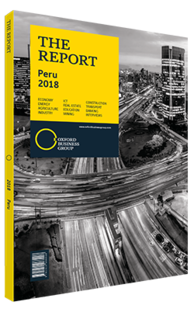Javier Lancha de Micheo, CEO, APM Terminals Callao : Interview

Interview : Javier Lancha de Micheo
What are the principal contributing components behind Peru’s successful efforts to boost its international connectivity?
Javier Lancha De Micheo: There are three critical aspects behind Peru’s successful efforts to enhance its connectivity to the world. First, Peru has a rich variety of quality products to export, such as hydrocarbons and fish.
Second, Peru’s numerous trade policies show the government’s support to the enhancement of the country’s connectivity. Free trade agreements (FTAs) have allowed Peru’s non-traditional exports to increase dramatically in recent years, while increasing the efficiency of the logistics chain and the stability of the market.
Third, is the crucial role of logistics operators. In fact, 2017 was a record year for cargo moved between all ports, with volume reaching 100m tonnes, a 10% increase on the previous year.
Port authorities have the responsibility of leading the sector and developing the national transport and logistics network, and trade policies. Hence, measures that promote efficiency and minimise bureaucracy are key, as well as having port operators that can guarantee solutions to the challenges faced and commit to long-term investments.
It is also worth mentioning that there is one fundamental element propelling the sector towards enhanced and long-term dynamism, which is the National Port Development Plan.
How does innovation strengthen transport and logistics, as well as assist in overcoming the challenges faced by the sector?
LANCHA: Innovation is key for the enhancement of the sector’s dynamism. It increases the ability to quickly adapt to changes in markets, such as that of the shipping industry or the mega-vessels segment. Innovation means enhancing economies of scale and energy efficiency, and decreasing the environmental footprint. Due to these and other changes, ports must be more scalable, and be able to facilitate new cranes and greater capacity. Innovation not only comes in the form of infrastructure or equipment, but also through software that can enhance the efficiency of cargo identification, quality measures and other fundamental processes.
How does Peru’s geographic location strengthen the commercial relationship between Latin America and the Asia-Pacific region?
LANCHA: Peru has a privileged geographic location. It is a natural transport and logistics hub that connects North and South America, as well as South America with the Asia-Pacific region. In 2017 Peru reached a total of 100m tonnes of exported cargo through its ports, an increase of 10% on 2016 figures. The increase of exports show that there is a high demand for Peruvian products, especially for minerals from Asian nations, mainly China. Furthermore, the FTA negotiations between Peru and Australia indicate a possible further increase of trade activity with the Asia-Pacific region.
In what area should investments be targeted in order to strengthen the country’s logistics chain?
LANCHA: It is fundamental that investments focus on improving and enhancing port infrastructure. The national port system accounts for 45 ports and 88 terminals, of which seven are under concession. Through concessions, ports can get the investment they need thanks to the financial power that international port operators can bring to the table. For instance, APM Terminals has invested $460m in the North Pier Terminal in the Port of Callao since 2013. Furthermore, the logistics chain requires better access to ports and producers of raw material sources, better connectivity through road infrastructure and less bureaucratic hurdles.
You have reached the limit of premium articles you can view for free.
Choose from the options below to purchase print or digital editions of our Reports. You can also purchase a website subscription giving you unlimited access to all of our Reports online for 12 months.
If you have already purchased this Report or have a website subscription, please login to continue.

